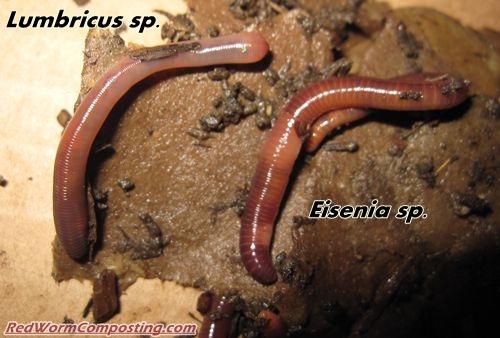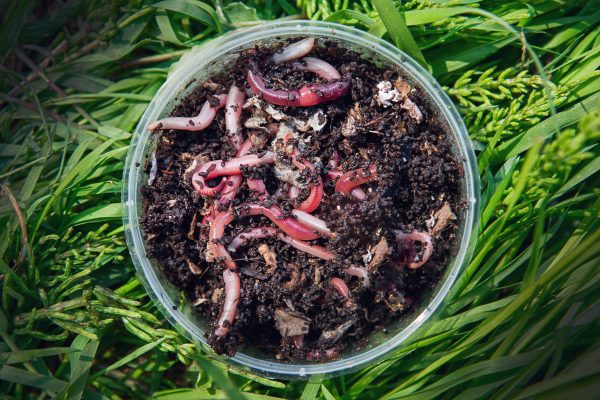Understanding the Perks of Red Wiggler Composting: How This Reliable Approach Transforms Organic Waste Into Nutrient-Rich Soil Modifications
Red Wiggler composting, employing the types Eisenia fetida, offers an engaging approach to organic waste administration, transforming cooking area scraps and backyard particles into valuable soil changes. This technique not just boosts dirt fertility yet additionally addresses pushing environmental concerns, including garbage dump waste reduction and greenhouse gas discharges.
What Are Red Wigglers?
Red wigglers, clinically called Eisenia fetida, are a varieties of earthworm that play a crucial duty in vermicomposting systems. These worms are identified by their reddish-brown shade, fractional bodies, and a distinctive capacity to grow in organic-rich environments, making them perfect for composting applications - Red Wiggler Composting. Unlike their garden-dwelling counterparts, red wigglers choose to occupy the upper layers of soil, where decomposing matter is abundant
Commonly gauging between 3 to 4 inches in size, red wigglers have a high reproductive price, enabling them to multiply quickly under ideal conditions. They have a special digestive system that enables them to refine natural waste effectively, converting it right into nutrient-rich castings, which are highly valuable for plant development.
Their tolerance to differing wetness levels and temperature level ranges further boosts their utility in vermicomposting arrangements, making them a preferred choice amongst composting lovers. Furthermore, red wigglers are aerobic microorganisms, which requires a well-aerated composting setting, making sure effective disintegration. Understanding the organic qualities and behaviors of red wigglers is necessary for enhancing their usage in sustainable waste monitoring practices.

Benefits of Vermicomposting
Taking advantage of the power of vermicomposting offers a wide variety of environmental and agricultural benefits. First of all, it significantly decreases natural waste in landfills, thus decreasing methane emissions, a potent greenhouse gas. By drawing away food scraps and backyard waste to vermicomposting, we sustain a more sustainable waste administration system.
Furthermore, vermicomposting boosts dirt health. The castings produced by red wigglers are rich in necessary nutrients, germs, and enzymes, boosting dirt structure and fertility. This nutrient-rich amendment promotes robust plant growth and enhances water retention, minimizing the requirement for chemical plant foods.
In addition, vermicomposting fosters biodiversity in the dirt ecological community. The intro of beneficial microorganisms from worm castings aids in disease reductions and nutrient biking, developing a much healthier setting for plants.
Financially, vermicomposting lowers the prices linked with chemical inputs and waste disposal. Gardeners and farmers can cultivate top quality produce at lower costs, contributing to food safety and sustainability.
Exactly How to Beginning Composting
Beginning a composting endeavor can be a simple and rewarding procedure. To begin, select a suitable place that is well-drained and gets partial sunshine. This will certainly help maintain a well balanced temperature level, crucial for the composting process. Next, choose a compost bin or create a designated location in your yard, guaranteeing it is conveniently available for collecting and including materials garden compost.
Gather natural materials such as cooking area scraps, lawn waste, and shredded paper. Aim for a well balanced mix of 'green' products, high in nitrogen (e.g., fruit scraps, coffee grounds), and 'brownish' products, rich in carbon (e.g., dried out leaves, cardboard) A proportion of approximately 2:1 green to brown products is optimal.
Beginning layering your materials, making certain sufficient air blood circulation by turning the stack frequently. This advertises aerobic decay, reducing odors and speeding up up the procedure. Monitor dampness degrees; the compost must really feel like a damp sponge however not extremely wet.
Nutrient Profile of Vermicompost
Composting, specifically with red wigglers, generates a nutrient-rich product recognized as vermicompost. In addition, it offers micronutrients like iron, magnesium, and calcium, look at more info cultivating robust plant growth and boosting dirt health and wellness.
The microbial activity present in vermicompost better enhances its account, presenting beneficial bacteria and fungis that advertise nutrition accessibility and uptake in plants. This biological part aids in suppressing plant conditions and improving soil structure, causing enhanced water retention and aeration.

Environmental Effect of Composting
The environmental effect of composting, particularly via making use of red wigglers, is extensive and diverse. This technique significantly minimizes the volume of organic waste sent out to landfills, which consequently decreases greenhouse gas discharges, specifically methane-- a powerful contributor to environment modification. By drawing away organic products from dig this land fills, red wiggler composting not only assists minimize environmental deterioration however additionally promotes sustainable waste administration techniques.

Furthermore, composting adds to carbon sequestration, as the process catches carbon dioxide from the environment and stores it in the dirt. This natural procedure help in combating environment adjustment while improving the dirt - Red Wiggler Composting. On the whole, red wiggler composting offers a feasible, environmentally friendly option for waste administration and environmental sustainability, promoting healthier environments and a more lasting future
Final Thought
In verdict, Red Wiggler composting serves as a reliable technique for converting organic waste right into important dirt changes. The procedure not only enhances soil fertility and framework however likewise reduces ecological problems linked with waste disposal.
Red Wiggler composting, utilizing the varieties Eisenia fetida, provides an engaging method to natural click here to find out more waste management, converting cooking area scraps and lawn particles into beneficial soil changes. Unlike their garden-dwelling equivalents, red wigglers choose to live in the top layers of soil, where decomposing issue is abundant.
The spreadings generated by red wigglers are rich in necessary nutrients, microbes, and enzymes, enhancing soil framework and fertility. The nutrient-rich byproducts of red wiggler activity enhance dirt structure, boost water retention, and advertise biodiversity within the dirt community.In verdict, Red Wiggler composting serves as a reliable approach for converting organic waste right into beneficial soil amendments.